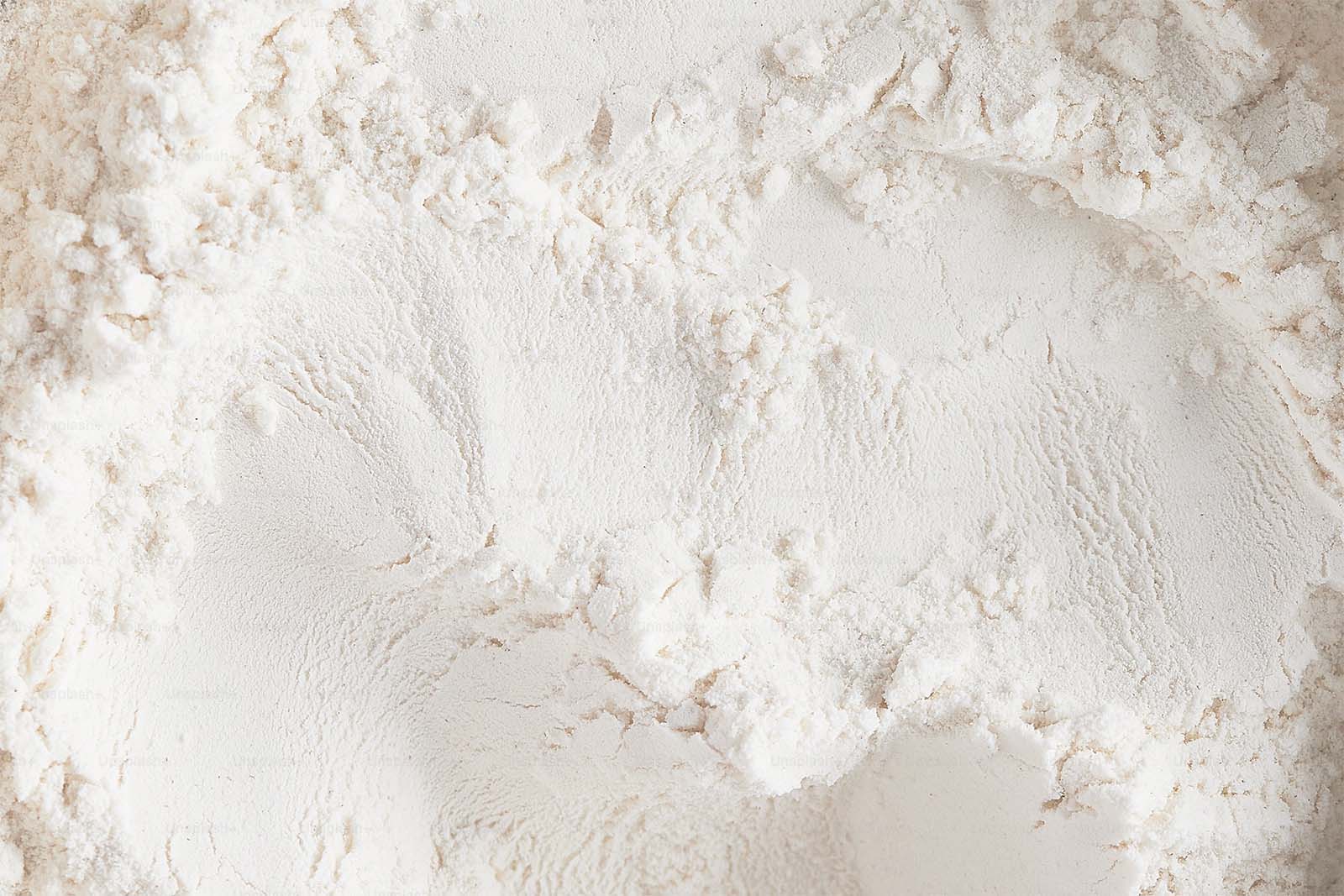Sous vide equipment
What I use, what I like about my setup, and what I don't.
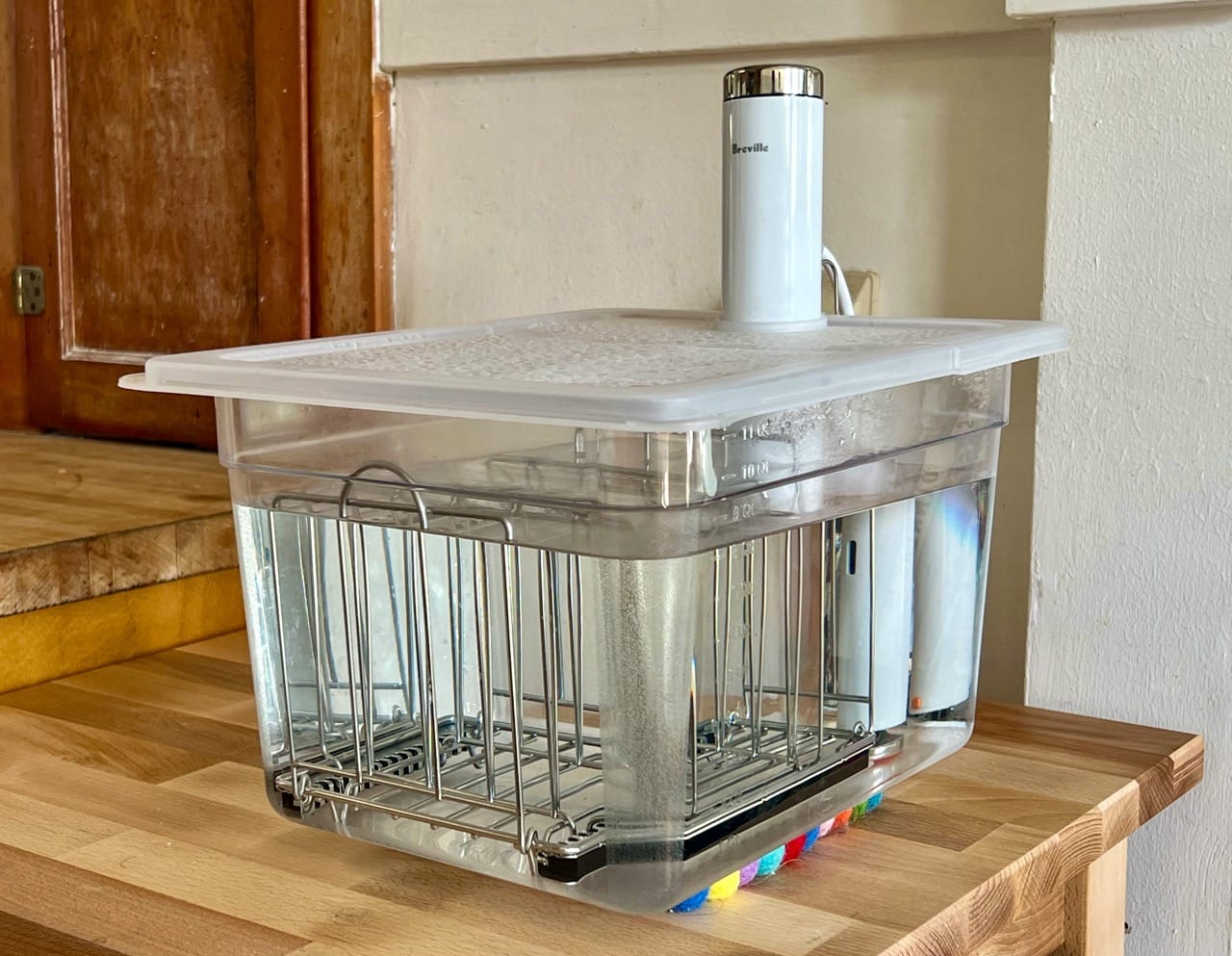
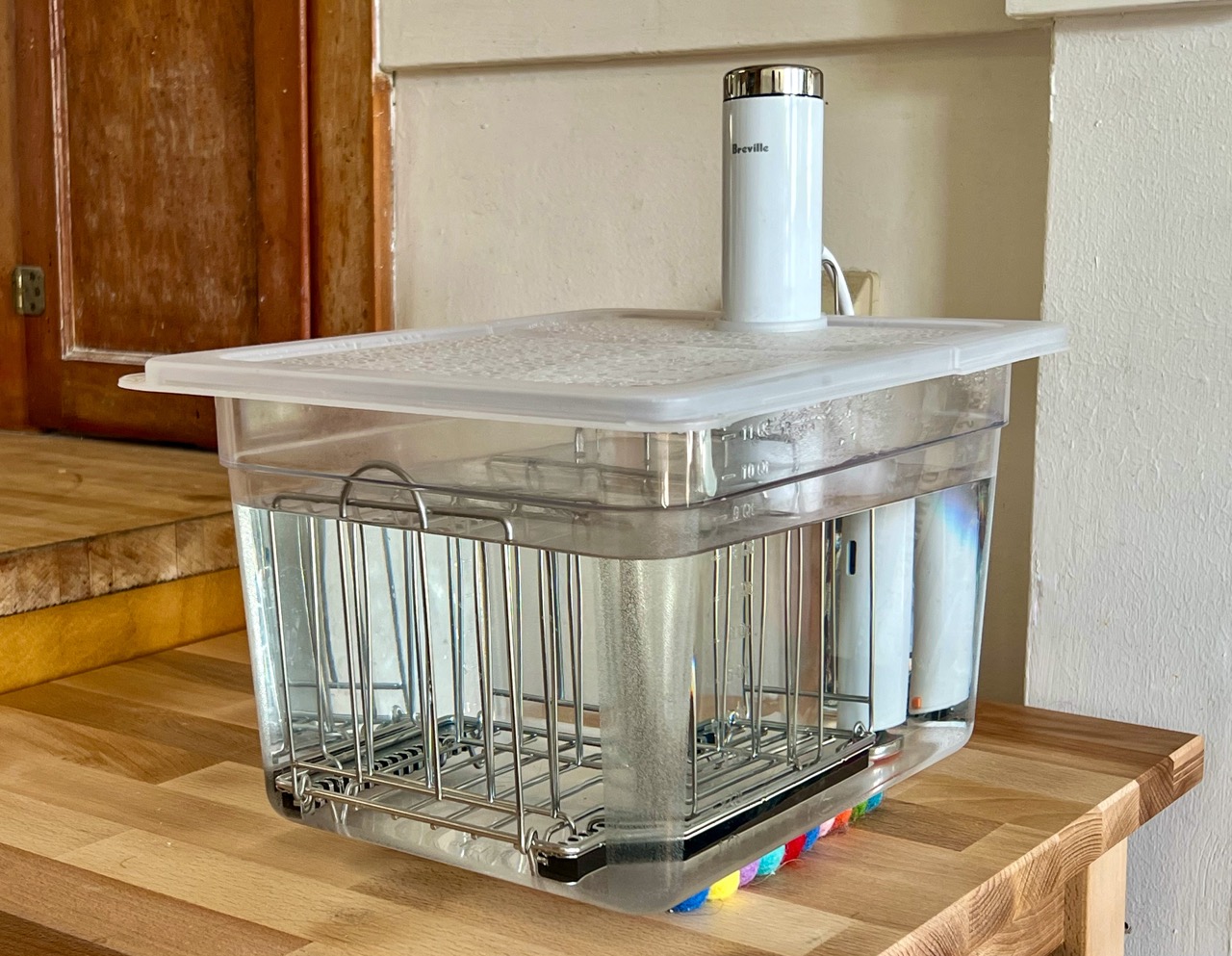
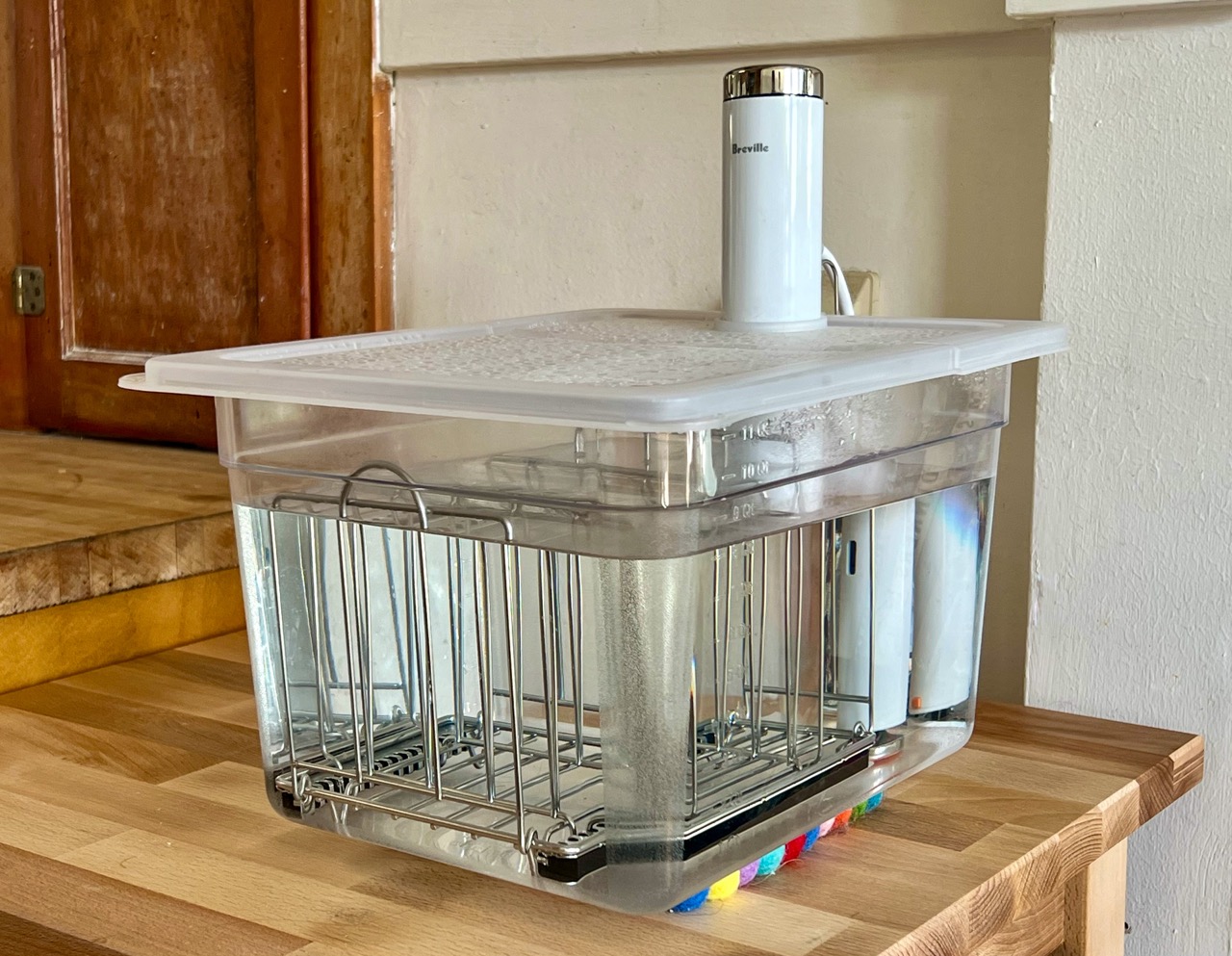
This is the fourth post in a five-post series about the sous vide cooking method:
- Sous vide pros & cons
- How I use sous vide
- How to try sous vide without special equipment
- Sous vide equipment (this post)
- Sous vide books, recipes, and other resources
Lemme set expectations real quick: I can't give you a clear recommendation for what you should buy. I haven't used enough equipment, only what I've purchased. For a more complete picture of your options, you'll need to look for reviews from others.
But I'll share my experiences with sous vide equipment. There will be grumbling, but all told I am happy to have every one of these pieces. They all let me do things I couldn't before, and they all see heavy use in my kitchen.
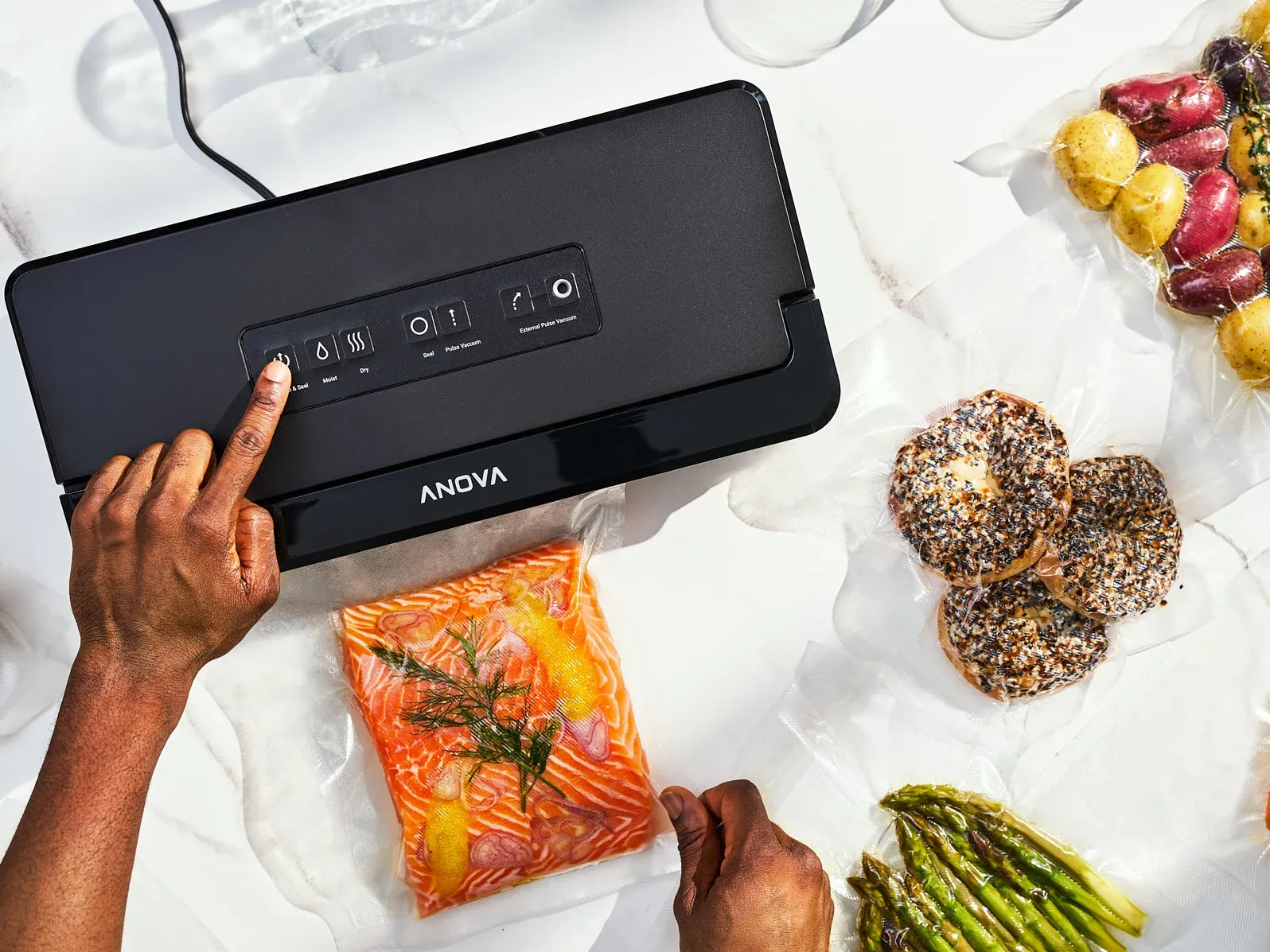
Vacuum sealer
My vacuum sealer gets used for more than sous vide—I use it for general food preservation, especially for storing food in the freezer. The difference vacuum sealing makes in helping food last longer is pretty remarkable. No more freezer burn!
I chose the Anova Precision Vacuum Sealer Pro. It had good reviews. I liked that it did a double seal on the bag, and that it could handle some moisture. I also liked the external port with a hose attachment, to let you vacuum seal things beyond bags. The website says, "specialized canning jar lids, a wide variety of vacuum-ready containers, and even resealing wine bottles are all on the table."
But it turns out that "are all on the table" is throwing a lace doily over a very large elephant in the room, one I missed seeing. Anova does not actually sell anything that fits with that hose attachment. They're only saying they can imagine selling those things, someday, maybe. In the meantime, the connector on the end of their hose doesn't fit with containers made by other companies, ones that actually are available. So the hose port is useless vaporware.
On top of that, the hose port on mine has never worked! There's zero suction on the hose, no matter how firmly I seat it. I contacted Anova about the busted port, and to their credit they were very responsive, but they wanted me to shoot a video of the port not working. I keep meaning to get around to that, but it's hard to be motivated to fix a port that leads nowhere.
I want to be able to recommend the Anova sealer, it gets the job done just fine, but if I were to buy a vacuum sealer all over again, I'd consider one that supports more of those kinds of accessories, like FoodSaver.
But if I could really go all out, I have my eyes on an entirely different type: a chamber sealer, which costs about five times as much. The sealer I have is an edge sealer: it sucks the air out of the open edge of a bag, then seals it shut. With a chamber sealer, you put your bagged food inside a rigid chamber about the size of a microwave, the air is removed from the entire chamber, and then the bag is sealed.
This approach means you can vacuum seal liquids. I make do with liquid-heavy sous vide items by using the manual pulse vacuum on my edge sealer, but I've run into trouble a few times when too much liquid gets in the sealing area and it fails. Where I would really feel the difference is in my workflow for food headed to the freezer, like chicken stock. Right now, I use Souper Cubes to freeze the food overnight into a hard cube before sealing. I love my Souper Cubes and I recommend them, but being able to skip that step would save me a ton of time and bother.
I can't justify the cost of a chamber sealer, and I can't justify the space it would take up, plus they're apparently pretty loud. The edge sealer I have will do, and even if its capabilities were oversold, it's been such an asset in the kitchen that I still love it. A suboptimal vacuum sealer is better than no vacuum sealer.

Vacuum bags
The Anova sealer came with a roll of 11" wide bags, but once that ran out, I switched to a roll of 8" bags from Wevac. They're less expensive, made of safe plastic, and a width of 8" instead of 11" cuts down on the plastic I'm using. They've never failed on me.
When you use plastic bags on a roll, you cut them to the length you want, seal one end, add your food, then vacuum and seal the other end. Because you cut them to size, you're saving on plastic a bit, but it slows you down having to seal both ends, rather than just one. Also, I've misjudged and cut the bags too short enough times that I've probably used as much excess plastic as if I'd bought pre-cut bags.
I'd like to try reusable vacuum seal bags, but as I've mentioned, the busted & useless port on my Anova is a hurdle there.

Immersion circulator
As mentioned in my post about trying out sous vide without the special equipment, the specialness of the immersion circulator is overblown. It's a water pump, a heating element, and a thermostat: basic, old technologies. I bet somebody out there has rigged up their own, Radio Shack-style, out of like, a toaster and an old aquarium pump.
That said, I'm not going to be playing with homespun electronics + water, so I splurged on a ridiculous, glowingly-reviewed immersion circulator: the Breville Joule Turbo.
And I love it! The Joule was originally created by ChefSteps, which was bought by Breville in 2017. I like its sleek profile—many immersion circulators are bulkier, and I wanted something that wouldn't take up a ton of space when it's not in use. I also like that I can set the temperature in single-degree increments—some others only let you move the temperature by 5 degrees, and HAVE YOU MET ME? No, I want to be fussy as fuck. Give me all the degrees.
The Joule has no interface on the device itself, and has to be controlled via an app. I do not love this, but that's a tradeoff I chose in going with the sleek option. The app works quite well and is easy to use. I've never had any connection issues.
I happily recommend the Breville Joule, I would buy it again, but it's a spendy option. A less expensive brand that I hear recommended often is Inkbird, but I don't know much about it. Wirecutter recommends the simple and affordable Monoprice circulator.
Anova, the same company that makes my vacuum sealer, makes a popular immersion circulator, but be warned: last year, they switched to a subscription model for the app that controls the Anova... or they tried to anyway. Folks were apoplectic, so I think they at least partially rolled back that plan, but I'd proceed with caution with Anova. I hope Breville never does that. My happiness with my Breville Joule aside, I think there's something to be said for choosing an immersion circulator that keeps it simple, with its own controls and no app, over one that has bells & whistles.

A big ol' water bucket
You don't need a special container to hold the water. Any old pot will do, as long as it's big enough for what you're cooking, plus some room for the water to circulate. I've seen people sous vide in their hotel room's ice bucket, or in a bathroom sink. Cambro tubs and coolers are popular, too.
I used a pasta pot for a while, but eventually bought a dedicated clear plastic tub with an adjustable metal rack for keeping space between multiple bags. The tub also has a lid to stop evaporation, which isn't an issue for the short cooks I do but is a concern if you want to do an all-day cook.
The tub I bought is by Everie; they make containers to fit a variety of immersion circulators. Here's the gross thing, though: I bought it through Amazon [hangs head in shame]. I'm not buying anything from Amazon anymore, and if you are also trying to get away from Amazon, I want to help. I haven't (yet!) been able to find Everie or similar style tubs from a better retailer. I was able to track down Everie's website, but the site does not inspire confidence, and I don't think I can recommend buying there, either.
I'd hold off on a dedicated tub until you've spent enough time playing with sous vide to know what size you'd want, anyway. Then, consider a clear plastic Cambro tub, and for a rack to hold the bags you can use a pot lid rack. You can cut a hole in the Cambro lid to accommodate your immersion circulator. You can get Cambro tubs from restaurant supply stores. The end result will cost similar and be just as good.
If you know of a good source for clear plastic tubs with racks & lids for sous vide, that isn't Amazon or Walmart or Target, please let me know, and I'll update this post to send people there instead!
Other stuff
The water container won't get super hot, but it does get hot enough that you'll want to protect the surface underneath, so don't forget some sort of trivet under your water container.
Clips are handy for controlling where the bag sits in the container. Binder clips, clothespins, bag clips, see what you have around the house.
Keep a set of tongs handy for pulling the bag out of the water.
You may find there's still enough air in your sealed bag that your food tends to bob up. I haven't had this issue, but I've seen folks solve this with some sort of weight. There are creative solutions out there: I've seen a large binder clip on the bottom of the bag with a heavy spoon threaded through the clip handles, and I've seen people buy a special metal chain mail square they can drape on top of the bag. I wouldn't bother to buy something special unless it becomes a recurring issue for you, just be prepared to get creative with what you have around the house.
Where to find recommendations
Start with the big name sites that review kitchen tools: Consumer Reports, Serious Eats, America's Test Kitchen, Food & Wine, NYTimes Wirecutter, take your pick. Avoid review websites you aren't already familiar with, too much fakery and AI.
After that, I think it's also worth spending some time in some online discussion forums to hear everyday experiences. I know, I mentioned on Monday that the online communities for sous vide are butt. But some are more butt than others, and the Reddit sous vide community isn't as rancid as the sous vide communities on Facebook.
Once you've zeroed in on a couple options, YouTube reviews can be super helpful.
Where to buy
I'm no longer shopping at Amazon, Walmart, Target, or any of those casually cruel megacorps that are rolling over for the Trump regime. If you're still buying from those places, I'm not going to judge you—after all, I used to, and we're all doing what we can to get by. Here are the ways I'm shopping these days:
- Support your local independent kitchenware store! Try to find one in your area, or find one in another city that can ship to you. These little guys need our support now more than ever!
For years now, most of my bigger kitchen purchases have been from a store in Santa Cruz called Toque Blanche. They sell online at MyToque, which means you can shop there, too. (I've never been to their brick & mortar location.) They have the Breville Joule, they have fantastic service, and they ship overnight FREE via FedEx for any order over $119, to anywhere in the continental US. - We recently got a Costco membership, and have been loving it. They're a great alternative among the bigger companies—none are perfect, but Costco has been clear about the value of all people in their corporate culture. They sometimes have vacuum sealers and immersion circulators, check your local store.
- Mid-size retailers like Sur La Table are worth considering.
- Restaurant supply stores are great fun. They're less likely to have tools that are meant only for the home cook, but what they have is often affordable, functional, and reliable.
- If you can't find a local store you can buy from, almost anything can be purchased directly from the manufacturer's website.
Coming tomorrow
I'll be wrapping up my series on sous vide with a list of resources I've found helpful, including books, recipes, and websites.
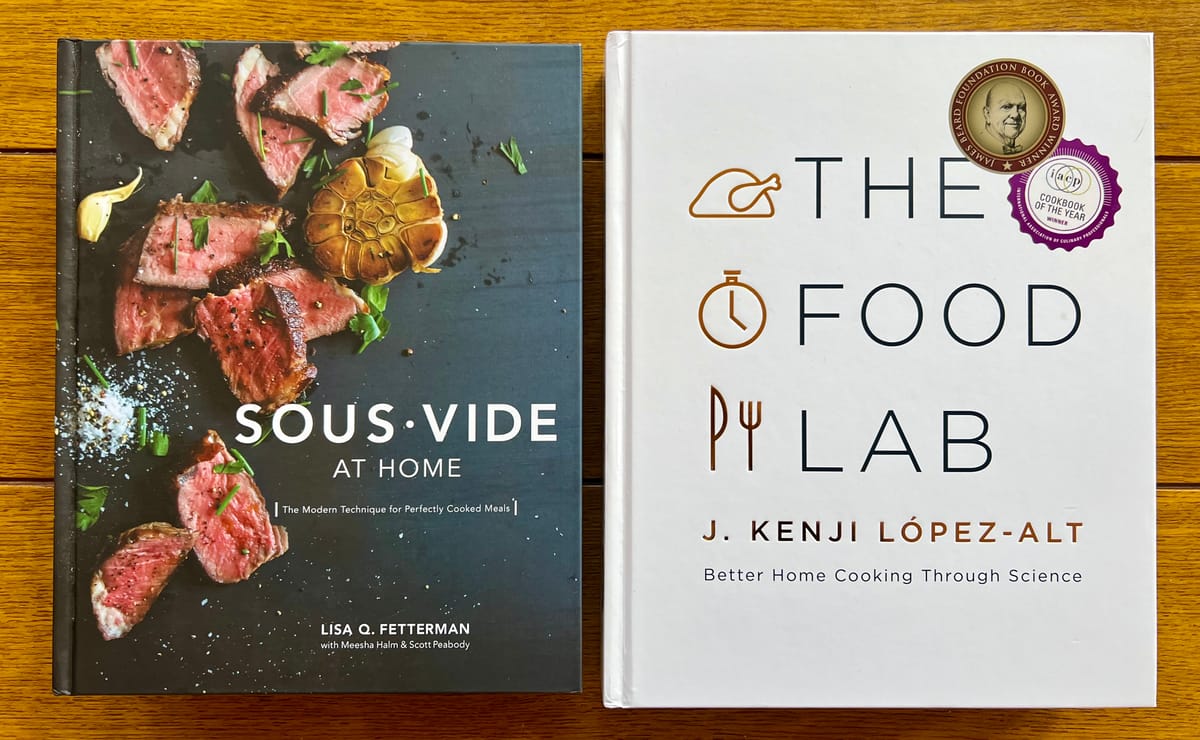
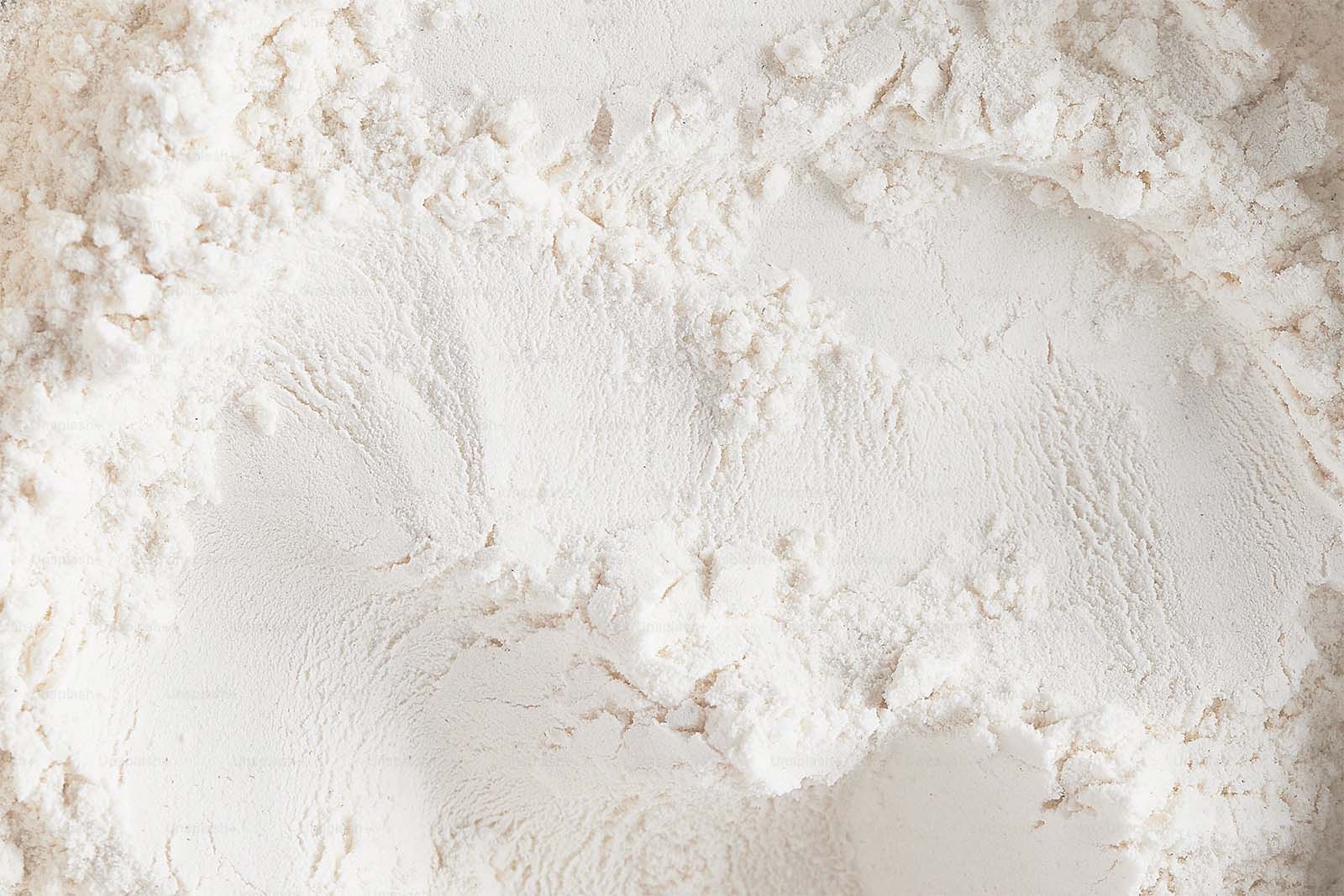
There are no ads or sponsorships on I Have Doubt!
This post has links to products. They are not affiliate links. I don't get anything from telling you about the products.
Learn more

